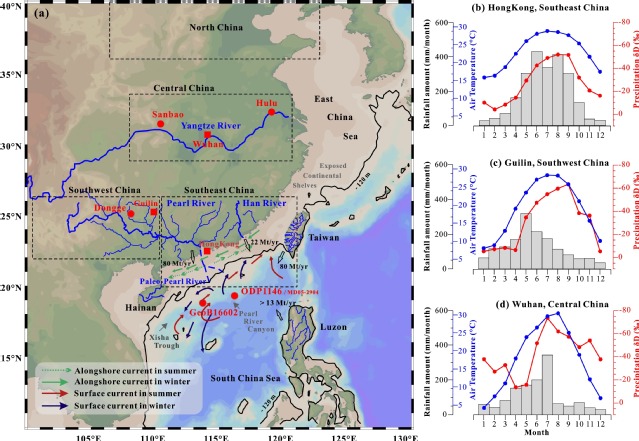Enqing Huanga, Hunru Chena, Enno Schefußb, Stephan Steinkeb,c, Jingjing Liua, Jun Tiana, Gema Martínez-Méndezb, Mahyar Mohtadib
a State Key Laboratory of Marine Geology, Tongji University, 1239 Siping Road, 200092 Shanghai, China
b MARUM – Center for Marine Environmental Sciences, University of Bremen, 28359 Bremen, Germany
c Department of Geological Oceanography and State Key Laboratory of Marine Environmental Science, Xiamen University, Xiamen, China
Abstract:
Precipitation isotope reconstructions derived from speleothems and plant waxes are important archives for understanding hydroclimate dynamics. Their climatic significance in East Asia, however, remains controversial. Here we present terrestrial plant-wax stable hydrogen isotope (δDwax) records over periods covering the last four interglacials and glacial terminations from sediment cores recovered from the northern South China Sea (SCS) as an archive of regionally-integrated precipitation isotope changes in Southeast China. Combined with previous precipitation isotope reconstructions from China, we find that the SCS δDwax and Southwest-Central China stalagmite δ18O records show relatively enriched and depleted isotopic values, respectively, during interglacial peaks; but relatively similar isotopic variations during most sub-interglacials and glacial periods over the past 430 thousand years. During interglacial peaks, strong summer insolation should have intensified the convection intensity, the isotopic fractionation along moisture trajectories and the seasonality, which are all in favor of causing isotopically-depleted rainfall over the East Asian monsoon regime. These effects in combination with a relatively high proportion of Indian Ocean-versus Pacific-sourced moisture influx should have resulted in strongly depleted precipitation isotopes (stalagmite δ18O) over most parts of China. However, Southeast China should have been affected by a relatively low ratio of Indian Ocean-versus Pacific-sourced moisture influx, which dominated over effects yielding depleted precipitation isotopes and led to enriched precipitation isotopes (δDwax). It is thus concluded that glacial boundary conditions and insolation forcing are the two most important factors for causing regional differences in precipitation isotope compositions over subtropical East Asia on orbital timescales.
Full article:
https://www.sciencedirect.com/science/article/pii/S0012821X18302498


